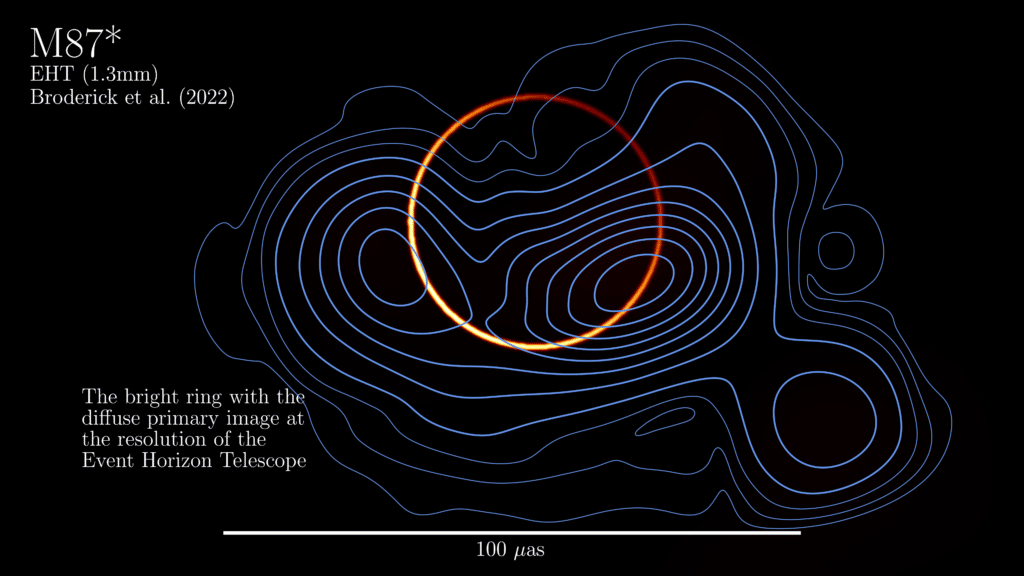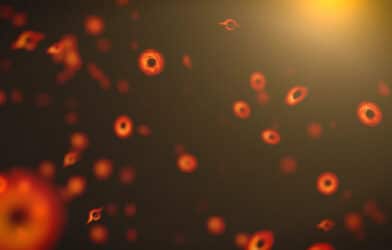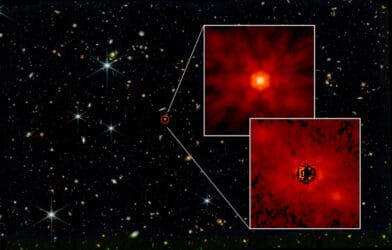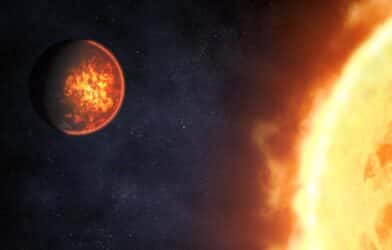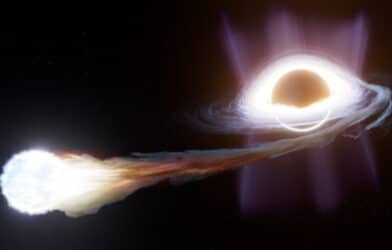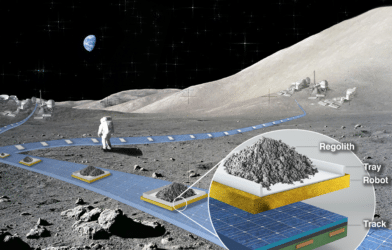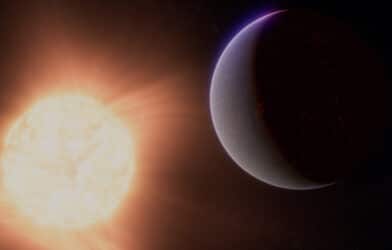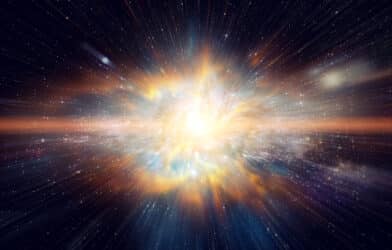A black hole is ready for its close-up, Mr. DeMille. Scientists have unlocked a sharp ring of light formed by photons lashing around the back of a supermassive black hole. This confirmed a theoretical prediction that there was a thin, bright ring of light hidden behind the glare of the diffuse orange glow.
Using advanced imaging algorithms, scientists were able to “remaster” the original imagery of the supermassive black hole at the center of the M87 galaxy. The first image of the black hole was unveiled in 2019.
“We turned off the searchlight to see the fireflies,” says Avery Broderick, an associate faculty member at Perimeter Institute and the University of Waterloo, in a statement. “We have been able to do something profound — to resolve a fundamental signature of gravity around a black hole.”
Researchers used a new imaging algorithm within the Event Horizon Telescope (EHT) analysis framework THEMIS to isolate and pull out the distinct ring feature from the original observations of the M87 black hole. The algorithm was also able to find the telltale footprint of a powerful jet blasting outward from the black hole. Because of this, scientists “peeled off” elements of the imagery which clearly reveals the environment around the black hole.
Before EHT coaxed black holes out of hiding, they were previously considered unseeable. EHT uses eight observatories on four continents. They are all pointed at the same spot in the sky and linked together with nanosecond timing.
Even though the 2019 M87 image was a landmark discovery, researchers always believed they could sharpen the image and glean new insights. By applying new software techniques to reconstruct the original data, the new resulting images depict photon rings. These rings are comprised of a series of increasingly sharp sub-rings, which the team then stacked to get the full image.
“The approach we took involved leveraging our theoretical understanding of how these black holes look to build a customized model for the EHT data,” notes Dominic Pesce, a team member based at the Center for Astrophysics | Harvard & Smithsonian. “This model decomposes the reconstructed image into the two pieces that we care most about, so we can study both pieces individually rather than blended together.”
The study is published in The Astrophysical Journal.
